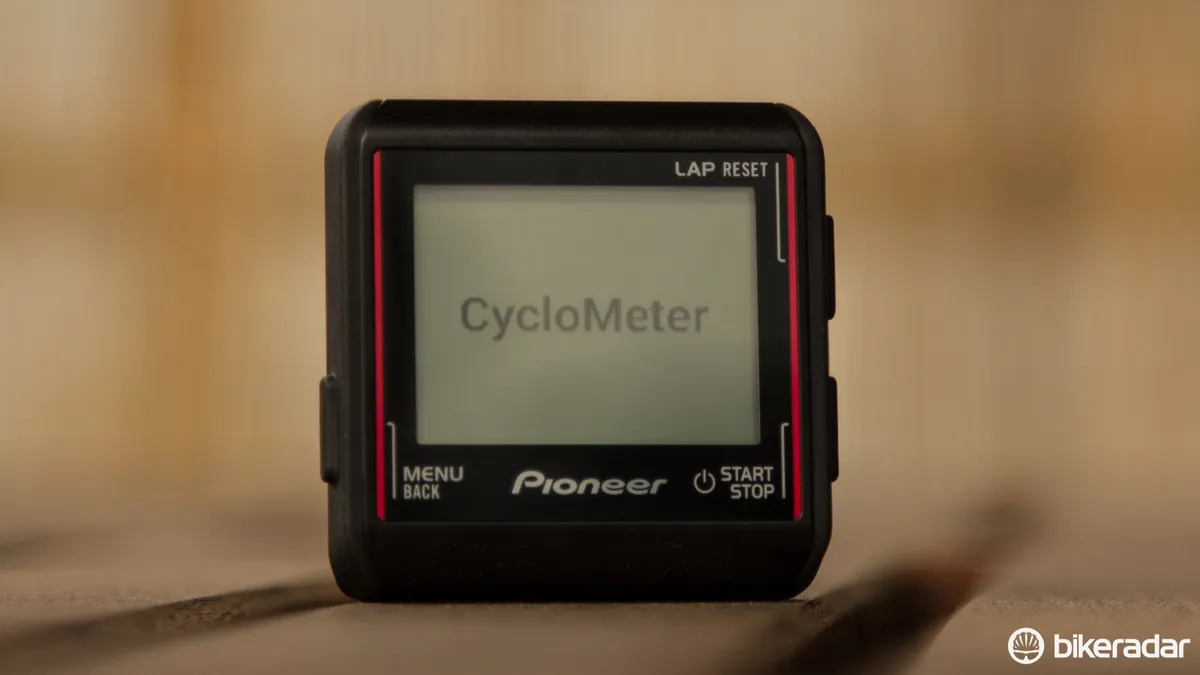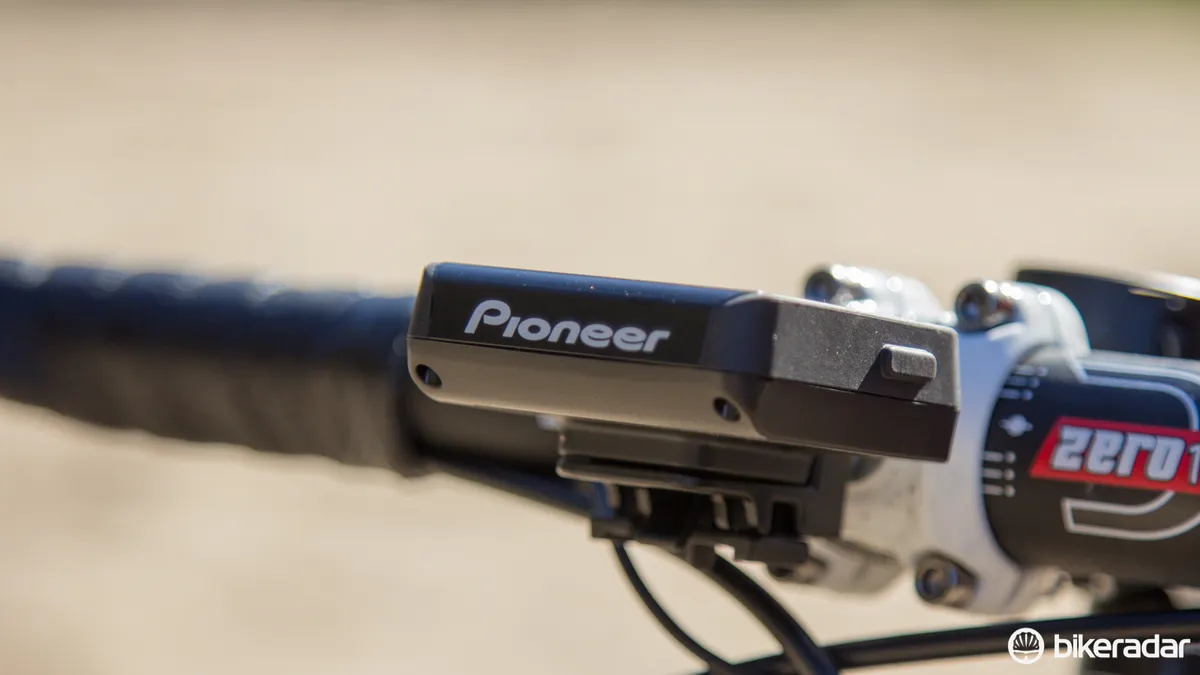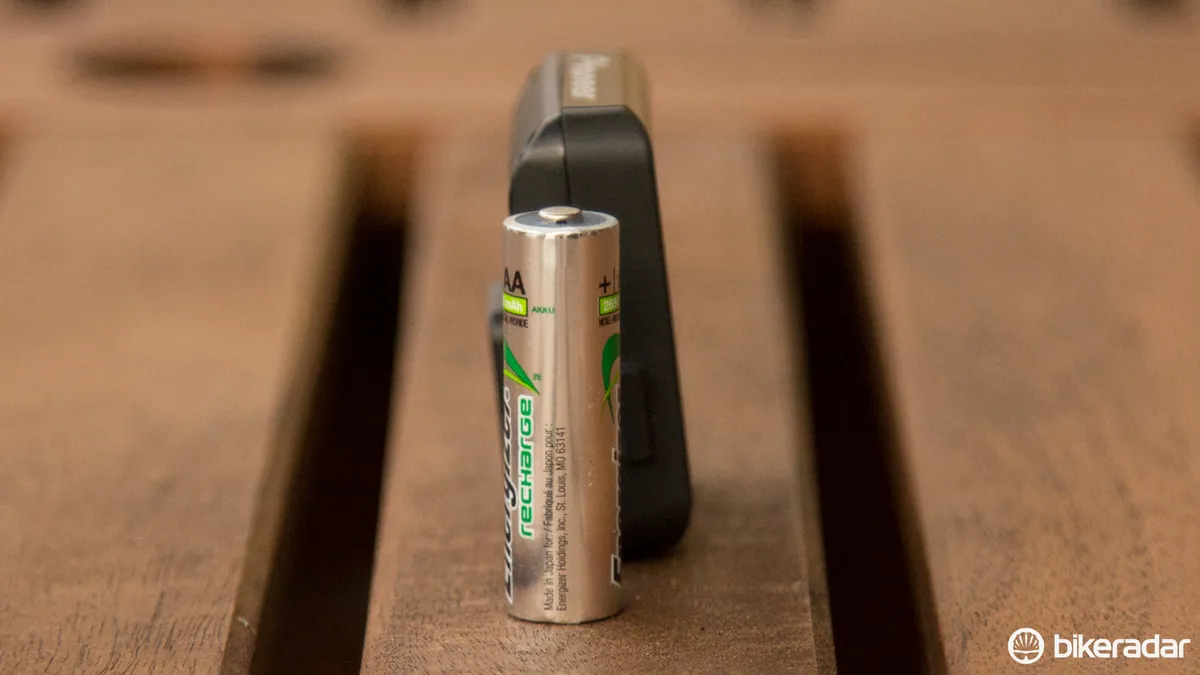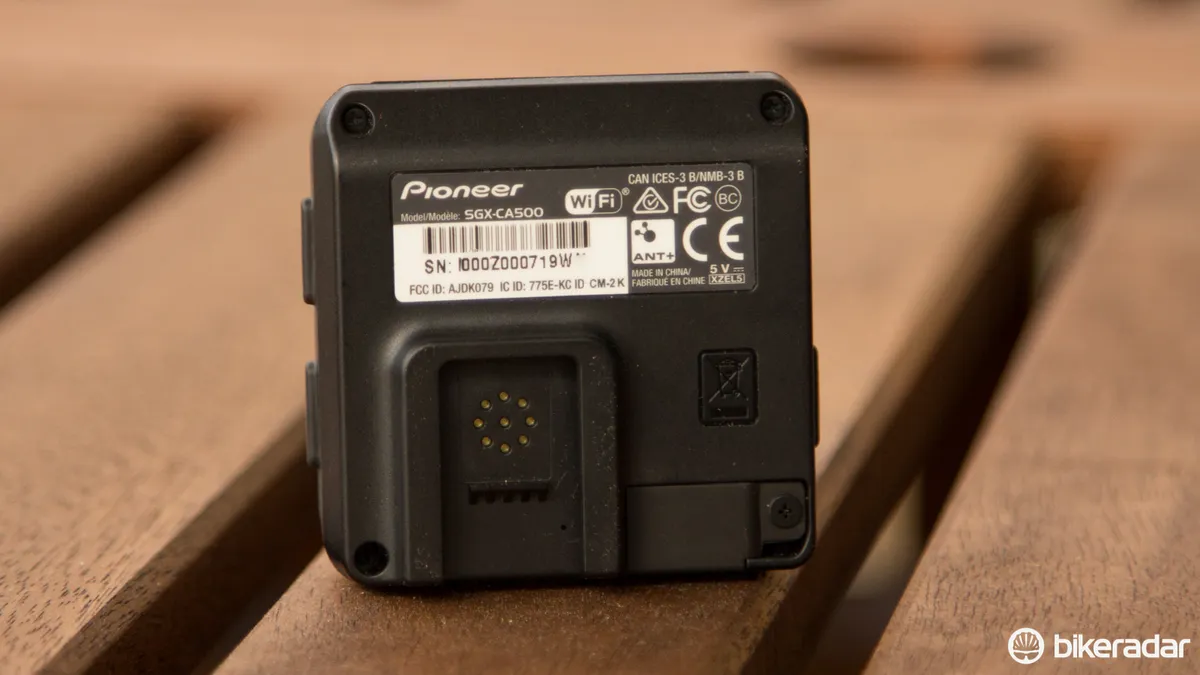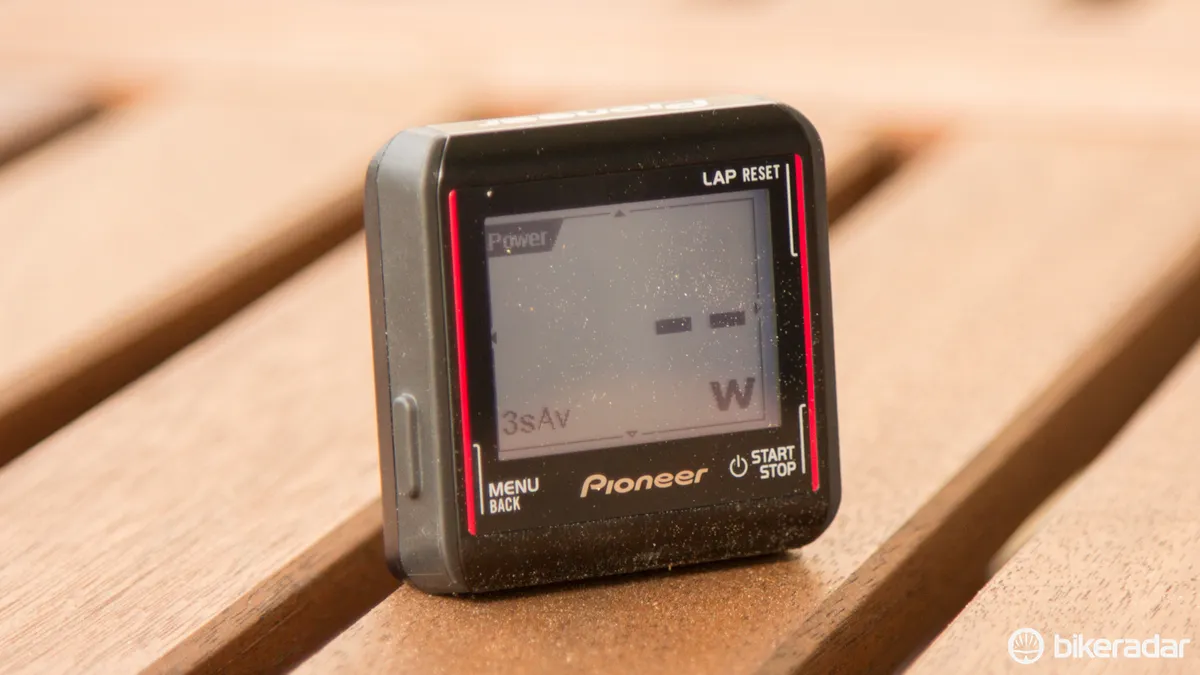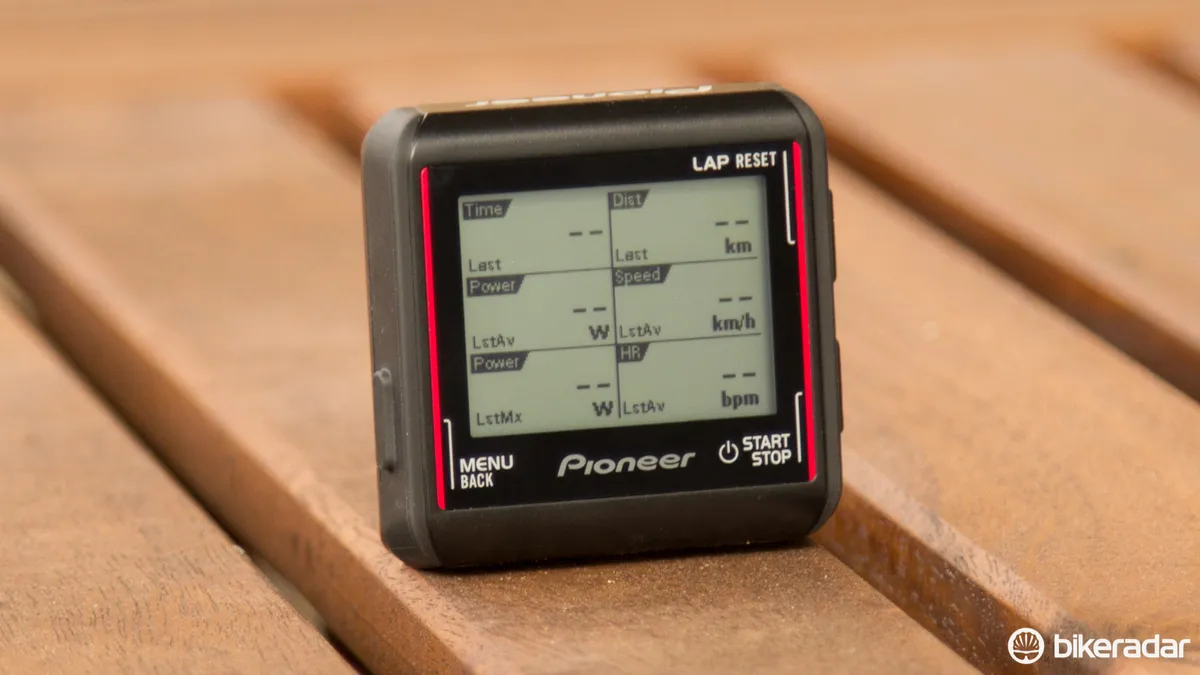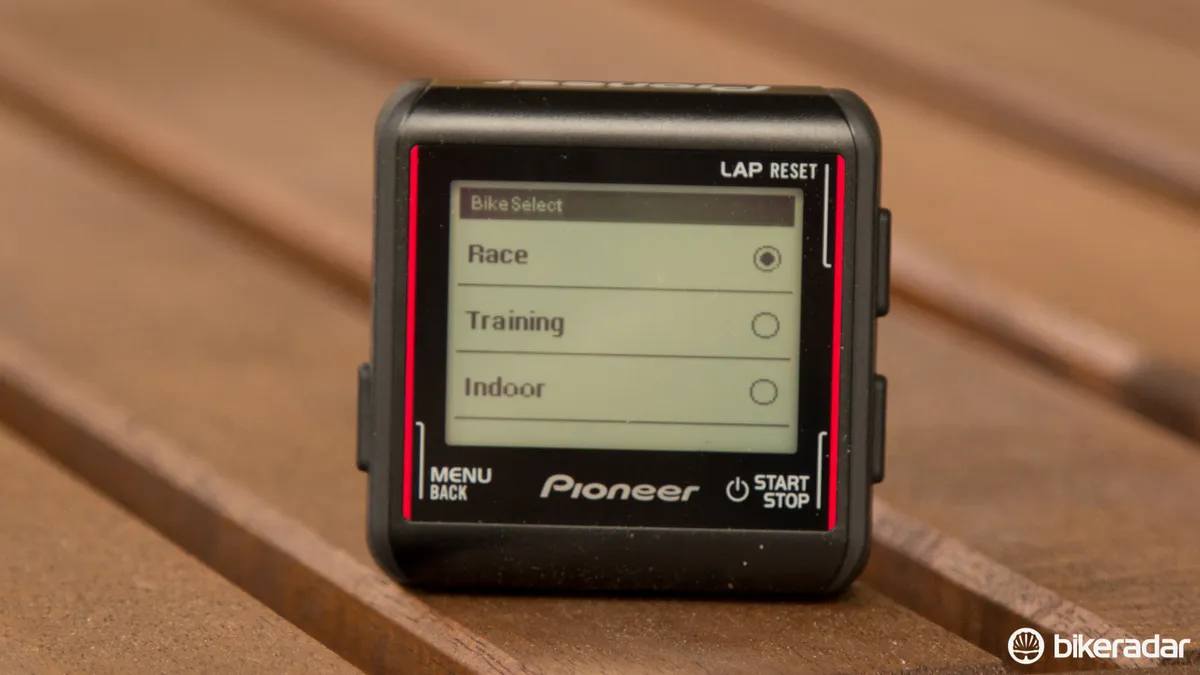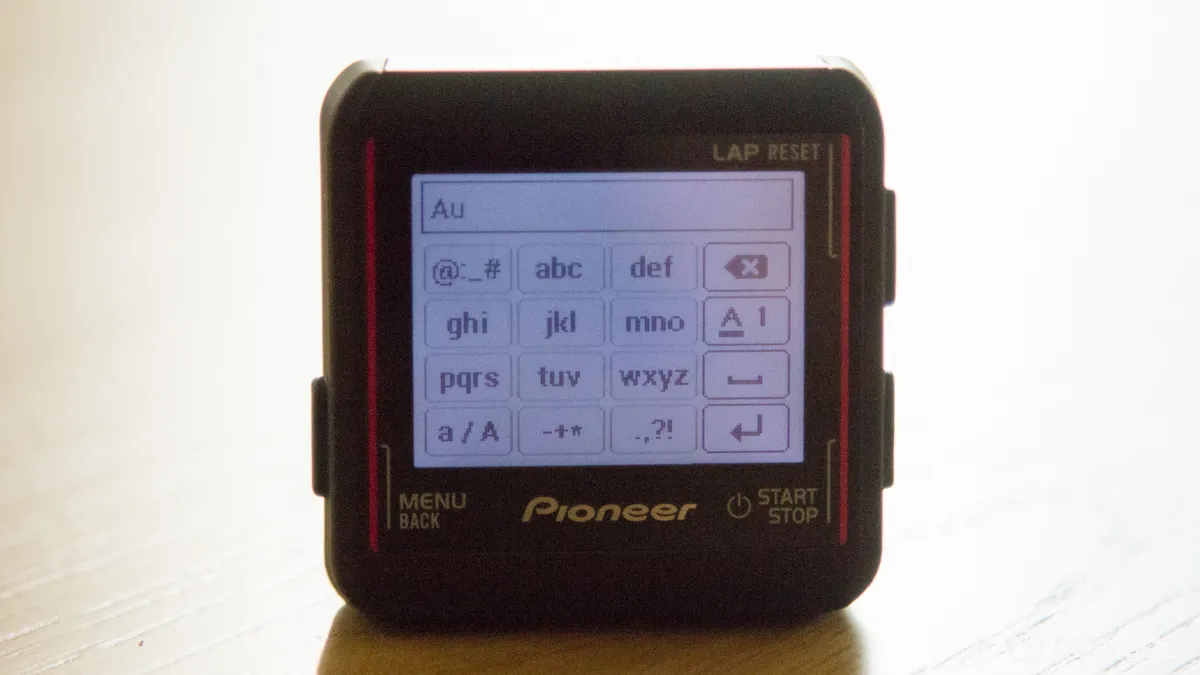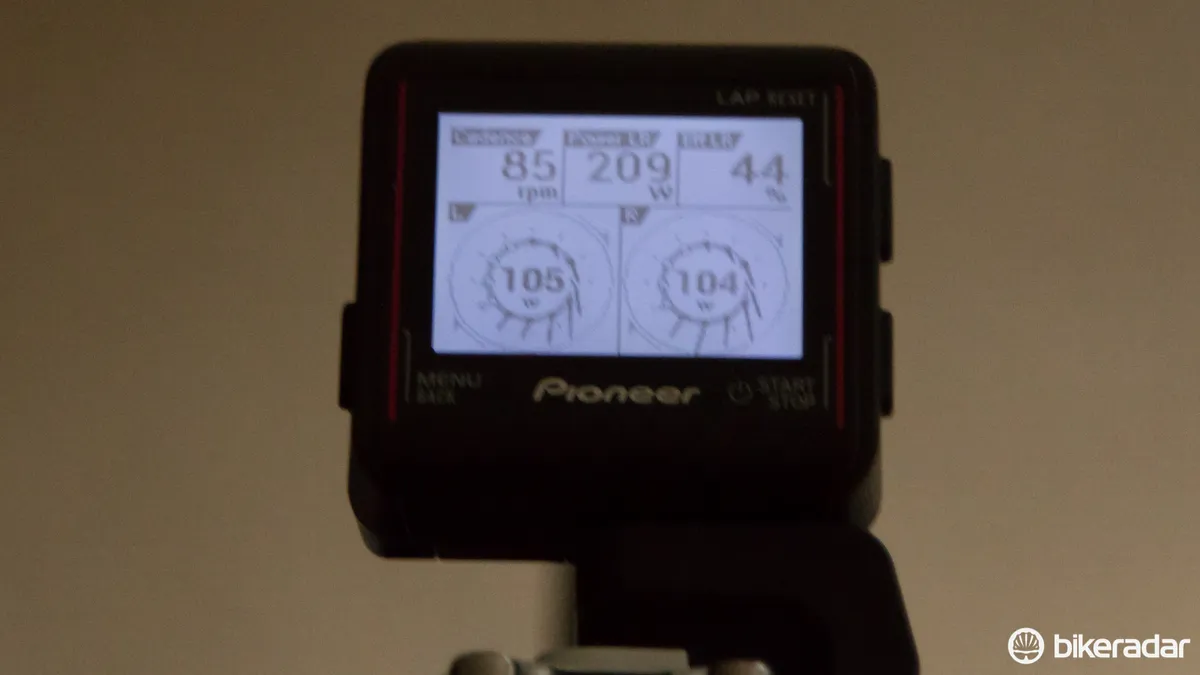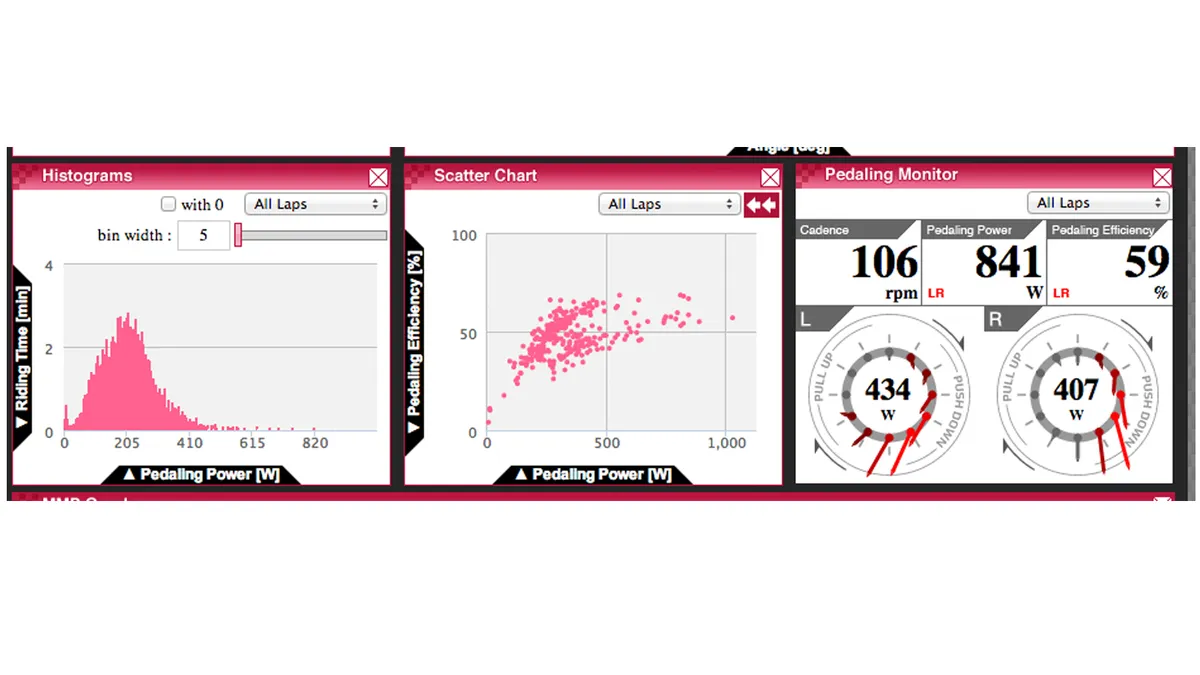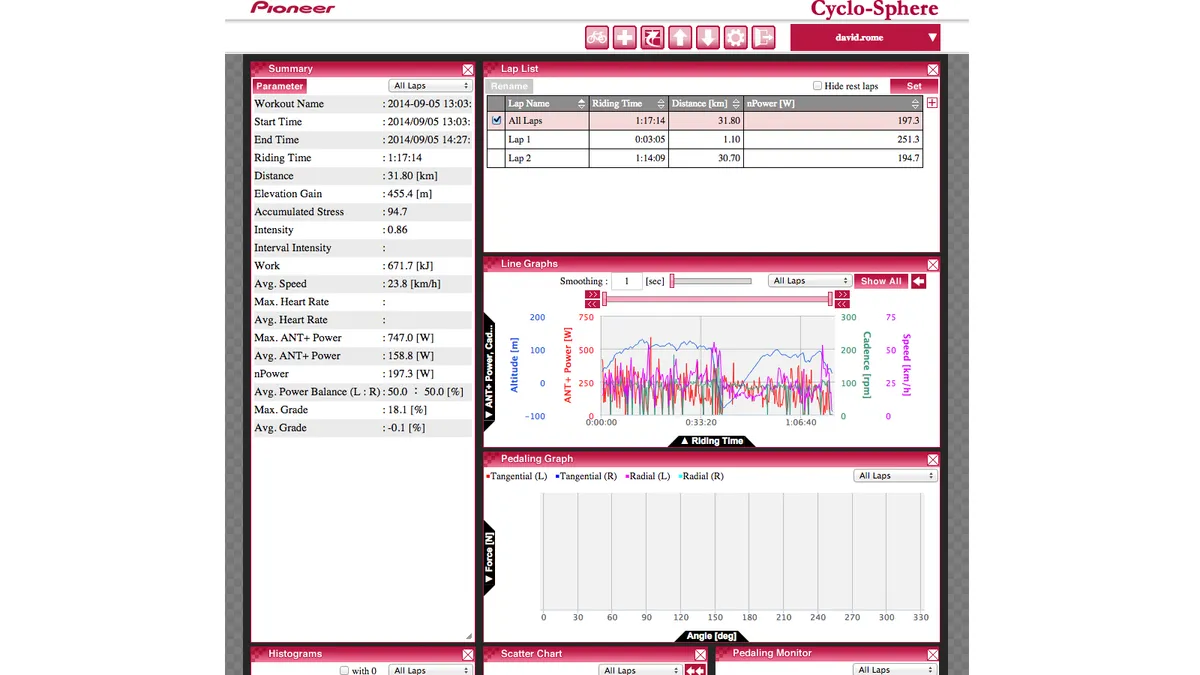The Pioneer SGX-CA500 was first and foremost introduced to display and receive the huge amount of information given from the electronic-specialist’s Gen-2 Power Meter. But given that it works with ANT+ accessories too, we decided to give it a separate review.
Read our full review of the Pioneer Power Meter Gen 2.
Design: well-thought out but could be more intuitive
As the newer, smaller and cheaper sibling to the colour-screen SGX-CA900 computer, the Pioneer SGX-CA500 head unit consists of a 1.87in black-and-white touchscreen display that’s purpose built to receive the unique directional-force information from the Pioneer meter. With the Pioneer-specific power features aside, it offers GPS tracking, Wi-Fi auto-uploads and ANT+ compatibility.
Sitting slimly out in front of the handlebars with a proprietary mount, the square-shaped SGX-CA500 borrows some design cues from SRM’s well-trusted computers. Where a Garmin or Magellan is placed in a portrait position, the Pioneer sits sideways, with the 160x128 pixel, 40x30mm effective screen size offering marginally more viewing room than a Garmin Edge 500.
The unit is controlled via three large rubber buttons (two on the right, one of the left) and the touchscreen. The buttons provide a tactile feel and an optional audible beep, while the screen offers a softer, optional beep when pressed.
While on the bike, the controls and layout work well, though we didn’t find the multiple setup menus intuitive – it was some time before they felt natural in use.

This screen layout offers a good balance of visibility and data. Some screen options allow up to nine data points – too many and too small for our eyes!
Despite the screen’s small size and occasional difficulty seeing the numerous displayed data fields, simply tapping on a particular data field will enlarge it to full screen. Tap again and it goes back to the page display. It’s a great feature if you want to focus on a single data point, such as power output during an interval.
You can have up to six customizable pages, which you can toggle between by swiping sideways on the screen. Changing the screen layout and categories is simple – you can change categories on the fly by pressing and holding the section you want.
Adjusting screen brightness is straightforward on the go too, by swiping the screen up or down, with 10 levels to choose from.
At first we found the touchscreen sensitivity suffered from similar accidental pressing and frustrations as early smart phones and GPS units did. However, deep within the option menus, we found the solution – a touchscreen calibration feature.

You'll quickly learn that most things can be corrected somewhere among the setting menus
This problem solving process seemed to occur often. The solution to an apparent drawback would be found somewhere among the device's multiple menus, though the rather basic instruction manuals provided little in the way of help.
In use: impressive performance, even paired with third-party equipment
When linked to its matching power meter, the SGX-500 has the ability to offer separate left and right power measurements along with a handful of other features that are likely to leave many drowning in vector-force based data.
The unit doesn’t offer any GPS mapping capability. Instead it uses the GPS to record data points for post-ride analysis and to allow for such features as auto-lapping and speed guidance.
On Pioneer’s own wireless protocol, we found power pick-up to be lightning fast and reliable. While we at first had significant ANT+ data delays and inconsistencies when used with a Stages power meter, the latest firmware version has brought the speed and reliability in line with our benchmark Garmin.
The use of an ANT+ heart rate strap and speed/cadence unit confirmed the data collection happening exactly in line and in time with our Garmin unit. This is a super positive note on a unit that's obviously designed with Pioneer's Power Meter in mind.
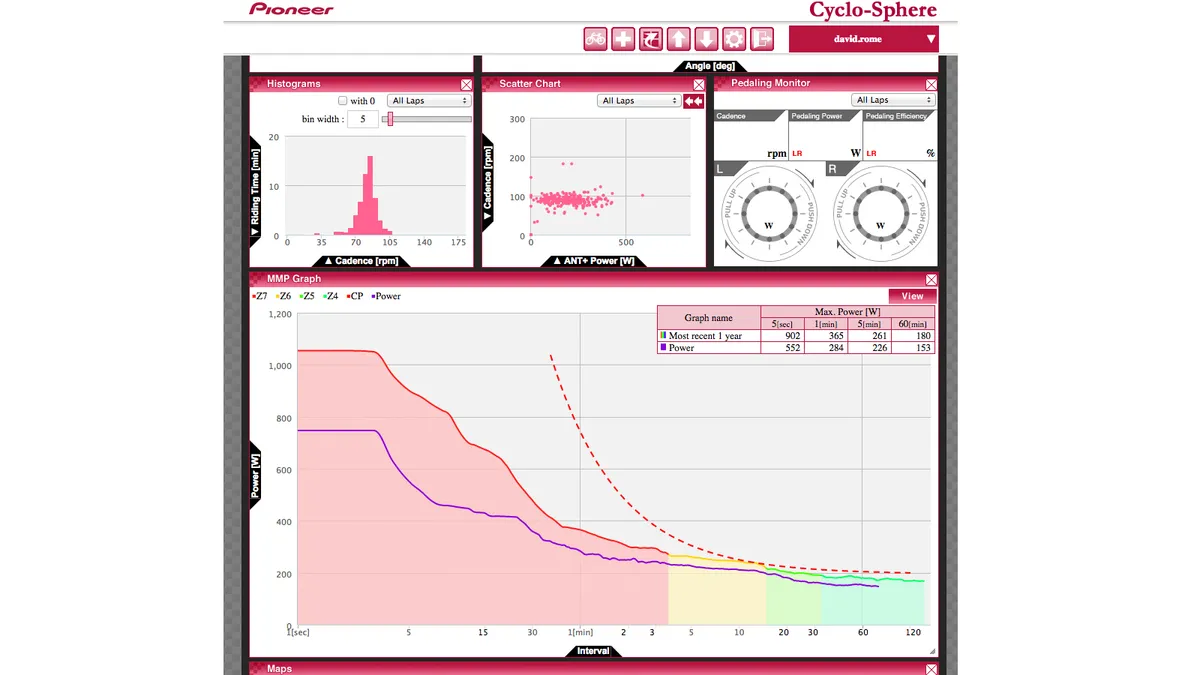
Pioneer's Cyclo-Sphere offers an incredible level of data analysis, all saved online
A big feature is the Wi-Fi sync with Pioneer’s own data-analysis software – Cyclo-Sphere. The wireless sync works exactly as advertised, uploading when in reach of your network, and you can even elect to forward the data directly to Strava if you choose.
For initial setup, entering your Wi-Fi and Cyclo-Sphere details into the head unit is time consuming, but simple. We created a Cyclo-Sphere account and synced the head unit with our Wi-Fi network and account in about 15 minutes.
While most will elect for the automatic Strava forwarding, Cyclo-Sphere is a decent analysis option in its own-right, offering a staggering level of detail. As Cyclo-Sphere is an online service, it works perfectly with PCs, Macs and many tablets too.
Even though data upload is made simple, the computer offers an enormous 3GB of useable internal memory. That's easily enough to keep old ride data stored for a long time. Cleverly, once full the unit will automatically overwrite the oldest data.
The SGX-CA500 has an operating time of approximately 12 hours, and a recharging time (via the Mirco USB port) of four hours. The computer seems reliable at keeping its charge when not in use, and never unexpectedly ran out of juice mid-ride during testing. In an unusual but welcome touch, the rechargeable lithium-ion battery has been made user-replaceable in case you see performance degrade over time.

Although it's plastic, the included bracket works a treat
The included 24g plastic bracket offers a secure double lock mechanism to ensure the 74g SGX-CA500 unit is held solidly in place. It fits standard oversized 31.8mm handlebars with a single Allen-head bolt, and never gave any concerns. Mounting the unit to aero bars can be done with an aftermarket adaptor, and the likes of K-Edge are now offering mount options too.
This is a very good computer with a staggering range of features and information when linked to its own power meter – and in this configuration it’s a must-have. However, if you don’t own or plan to own a Pioneer Power Meter, you’ll be buying in to many features you don’t need and missing a few others a Garmin or Magellan will offer for less.
